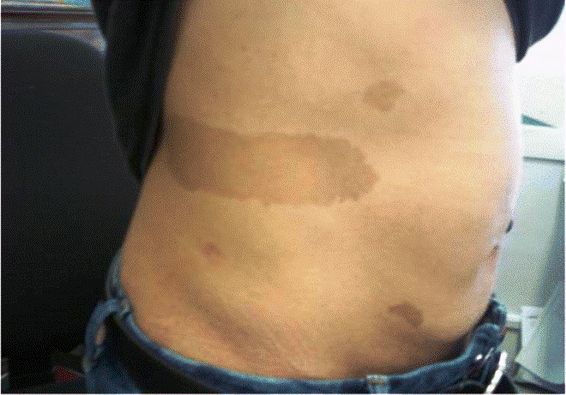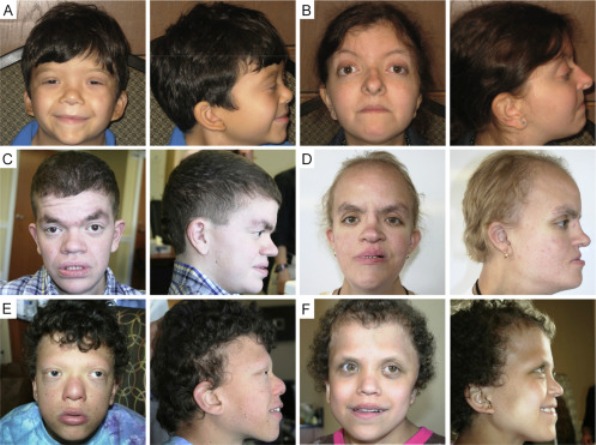
Legius syndrome is a rare genetic disorder that was first described in 2007. It is also known as neurofibromatosis type 1-like syndrome.
Legius syndrome is classically characterised by multiple light-brown macules, known as café-au-lait macules. Unlike neurofibromatosis type 1, there are no tumours found in Legius syndrome.
Who gets Legius syndrome?
Legius syndrome may occur in anyone who has at least one biological parent with genetically confirmed Legius syndrome. The prevalence of Legius syndrome is unknown, but it may be higher than expected due to misdiagnosis as neurofibromatosis type 1.
What causes Legius syndrome?
Legius syndrome is a genetic condition inherited in an autosomal dominant manner that involves a SPRED1 gene mutation on chromosome 15q14. This mutation results in the abnormal function of the SPRED1 protein, which is responsible for regulating specific cell-signalling pathways involved in cell proliferation, differentiation, and apoptosis. No other pathogenic variants have been found to cause Legius syndrome.
As an autosomal dominant condition, Legius syndrome may occur in anyone with at least one biological parent with genetically confirmed Legius syndrome. Rarely, it may also occur de novo, but these cases have not been evaluated sufficiently to confirm this. Each child with a parent with genetically confirmed Legius syndrome has a 50% risk of inheriting the condition.
What are the clinical features of Legius syndrome?
The clinical features of Legius syndrome vary significantly in nature and severity from one person to another.
Almost all patients with Legius syndrome present with multiple café-au-lait macules. The number of these macules tends to increase during childhood.
Other common cutaneous features may include:
* Freckles in the axillary and inguinal regions
* Lipomas.
Non-cutaneous features may include:
* Macrocephaly
* Unusual facial characteristics, similar to Noonan syndrome
* Short stature
* Pectus excavatum (sunken breastbone) or pectus carinatum (protruding breastbone).

* Learning difficulties
* Developmental delay
* Attention-deficit hyperactivity disorder (ADHD).
The intellectual disabilities are generally less severe in patients with Legius syndrome compared to patients with neurofibromatosis type 1.
Importantly, Legius syndrome does not cause neurofibromas and Lisch nodules, which are typically seen in neurofibromatosis type 1.
How is Legius syndrome diagnosed?
Legius syndrome is difficult to diagnose on a clinical basis alone given its similar cutaneous clinical presentation to other disorders with multiple café-du-lait macules.
Where Legius syndrome is suspected, genetic testing can be used to confirm the diagnosis. This involves:
* Sequence analysis of SPRED1
* Deletion/duplication analysis (if sequence analysis is unremarkable)
* A multi-gene panel for SPRED1 and other genes of interest.
Suspicious findings that may warrant genetic testing for Legius syndrome include:
Café-au-lait macules without other clinical features, suggesting neurofibromatosis type 1
A parent with café-au-lait macules without clinical features, again suggesting neurofibromatosis type 1.
What is the differential diagnosis for Legius syndrome?
Legius syndrome is often misdiagnosed because its pigmentary manifestations are very similar to those seen in other syndromes with multiple lentigines. Correct diagnosis is critical to guide long-term monitoring and management.
Neurofibromatosis type 1
Neurofibromatosis type 1 is the most common misdiagnosis due to its similar clinical diagnostic criteria.
Neurofibromas, Lisch nodules, bone abnormalities, and optic gliomas do not occur in Legius syndrome.
These two conditions are difficult to differentiate in younger children, as the characteristic tumours seen in neurofibromatosis usually do not develop until later in life.
Noonan syndrome with multiple lentigines
Noonan syndrome with multiple lentigines (previously known as LEOPARD syndrome, involves cardiovascular, ear, and genital abnormalities, which do not occur in Legius syndrome.
Other syndromes characterised by multiple lentigines include:
* Autosomal-dominant café-au-lait macules
* McCune-Albright syndrome.
What is the treatment for Legius syndrome?
Children with Legius syndrome should be under regular screening and evaluation for developmental delay, cognitive impairment, and behavioural issues.
The treatment of Legius syndrome is primarily supportive and should be focused on the specific problems of the affected individual.
Appropriate management, if indicated, may include:
* Physical, speech, and/or occupational therapy
* Behavioural-modification therapy and pharmacological therapy (ie, for ADHD).
What is the outcome for Legius syndrome?
Patients with Legius syndrome have a generally good prognosis with appropriate problem-based management.
An affected individual must consider the 50% risk of genetic transmission to each child.



No comments
Post a Comment